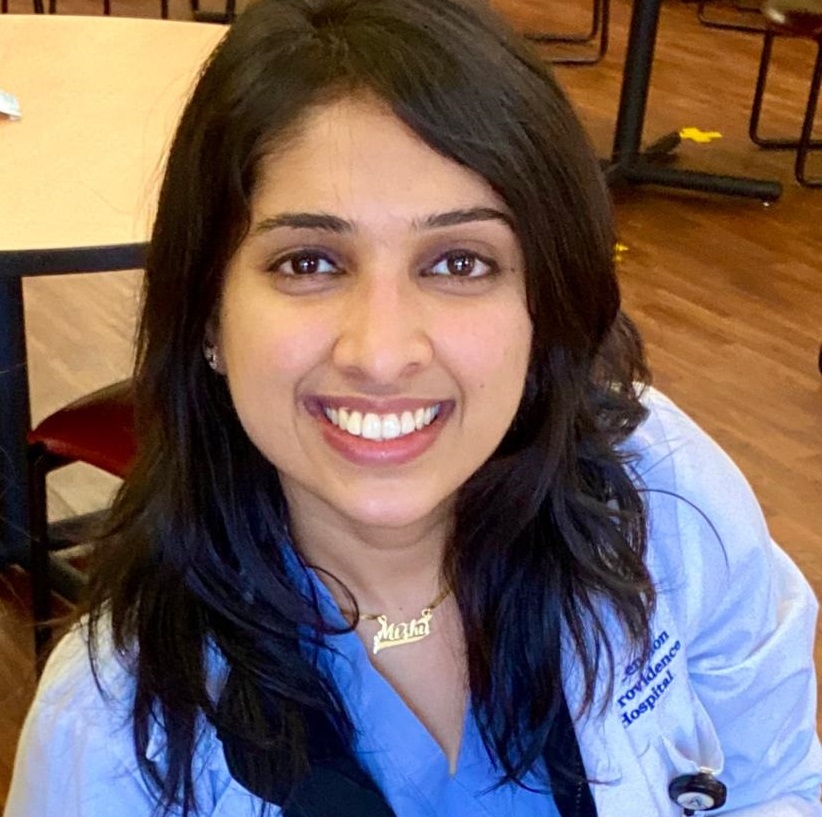A case study written by a resident of the Wayne State University School of Medicine’s Graduate Medical Education program was featured in a Jan. 18 New York Times article exploring why the COVID-19 virus affects twins differently.

Mishita Goel, M.D., is in the second year of her WSU-sponsored Internal Medicine residency. She treated identical twin sisters Kelly and Kimberly Standard last March and April at Ascension Providence Rochester (Michigan) Hospital. She had volunteered to help in the intensive care unit as it became overwhelmed with critically ill COVID-19 patients, she said. Kelly was hospitalized for a week, while Kimberly spent a month in critical condition.
“It was early during the pandemic and since we all were learning about this novel virus, what I knew was that only people with multiple comorbidities or elderly in age would have worse disease course and prognosis. But I was stunned to see such different trajectories of same infection in two most identical people with similar BMI and comorbidities,” Dr. Goel said. “I distinctly remember that feeling of fear and anxiety when I saw how a young female just a few years older than me with only a couple common comorbidities could need intubation and land in a critical care unit. It then struck me that no one knows anyone’s fate now if one gets this infection. In fact, that was the only time in my entire life when I had actually felt lonely and far from my family.”
The sisters lived together and shared the same comorbidities, including Type 2 diabetes mellitus, hypertension and morbid obesity. Although one twin had higher inflammatory markers, white blood cell count and an arguably more complicated medical history in comparison to her identical twin, she experienced a milder and shorter disease course.
The Journal of Medical Cases published Dr. Goel’s case study, “Clinical Course of COVID-19 Twins,” in August 2020. She was approached by a reporter for The New York Times who had seen the study and wanted to discuss the findings.
The case highlights the need for identifying proper disease markers and predictors early in the clinical course in order to direct future management guidelines and timely treatment, Dr. Goel said.